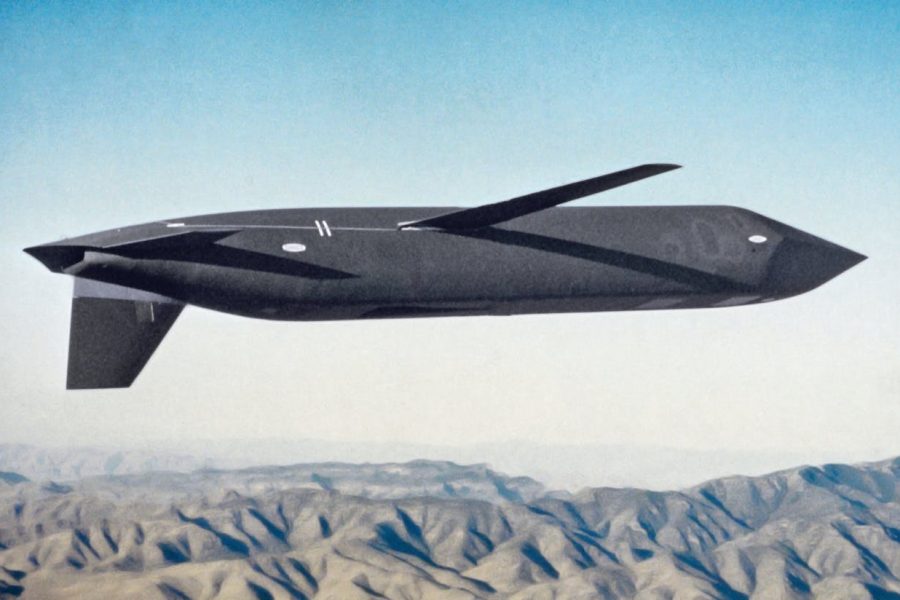The Air Force will continue development of the highly classified Long-Range Standoff nuclear cruise missile with Raytheon Technologies alone, closing out Lockheed Martin’s efforts more than a year early, the service announced April 17.
Raytheon will become the “sole source contractor” on the technology, maturation, and risk reduction (TMRR) phase, the service said in a press release. “This is an off-ramp, not a downselect,” a spokeswoman for the Air Force Nuclear Weapons Center said. She explained that Raytheon must still conclude its TMRR work, and there must be a formal contract proposal and award before Raytheon is considered the chosen LRSO contractor.
The LRSO will replace the nuclear AGM-86B Air-Launched Cruise Missile beginning in about 2030. It is a very-low-observable missile, which will equip the B-52 and B-21 bombers as part of the bomber leg of the nuclear triad. Its range is expected to be in excess of 1,500 miles.
Although the service is looking at wrapping some of the engineering and manufacturing work, including flight tests, into the technology, maturation, and risk reduction phase, that decision has not yet been made.
Raytheon recently passed its preliminary design review stage on LRSO and expected to complete TMRR in January 2022, said Wes Kramer, president of the company’s missile and defense sector.
“Our competitive TMRR phase, which included both Lockheed Martin and Raytheon as the prime contractors, enabled us to select a high-confidence design at this point in the acquisition process,” said Maj. Gen. Shaun Morris, commander of the Nuclear Weapons Center and program executive officer for strategic systems.
“Contract negotiations for the [EMD] phase, with a strong focus on schedule realism, and cost-capability trades, will start in fiscal year 2021,” Kramer said.
The Air Force awarded matching $900 million TMRR contracts to Raytheon and Lockheed Martin in August 2017, which called for a 54-month preliminary development program. That should have concluded in early 2022, but the spokeswoman said the Air Force had assessed the progress of the contractors and determined that Raytheon would deliver “full program requirements … on time.”
“We are re-framing our relationship with Lockheed Martin to focus on specific technology maturation we believe either has future applicability for the final LRSO design or will reduce overall program risk,” said Elizabeth Thorn, a system program manager at the Nuclear Weapons Center, in a press release. While that sounds like Lockheed will continue to contribute to the program, it actually means that Lockheed will “close out” its LRSO efforts and the Air Force will shift its focus to Raytheon’s design.
No layoffs are planned as a result of the Air Force’s action, a Lockheed spokeswoman said. A number of people working on LRSO have already been assigned to the company’s other efforts, she added.
“We are partnering with the Department of Defense on numerous important programs and initiatives that will benefit from the knowledge and skill sets gained by the employees that were part of the LRSO TMRR phase of the program,” the Lockheed spokeswoman said in an email.
The Air Force has designated the competing efforts AGM-180 and -181, but has never specified which one applies to the Raytheon entrant in the LRSO competition.
Gen. Robin Rand, then-head of Air Force Global Strike Command, told the Senate Armed Services Committee in June 2017 that USAF planned to spend $2.7 billion on LRSO between fiscal 2018 and fiscal 2022. The Congressional Budget Office, in a 2017 report, estimated that LRSO will cost $10 billion to produce 1,000 missiles, for a unit cost of $10 million apiece.
Air Force officials have said LRSO will not be a hypersonic weapon, and the program as now structured does not include a conventional variant. However, AFGSC commander Gen. Timothy Ray told Air Force Magazine recently that if a very long range conventional cruise missile—beyond the range of the Joint Air-to-Surface Standoff Missile-Extreme Range (JASSM-XR)—is needed, the LRSO would be the logical “starting point.”
The LRSO was singled out for special review by former Defense Secretary Jim Mattis, who was unconvinced at the outset of his tenure that it was necessary. He later offered his full endorsement of the weapon in the 2018 Nuclear Posture Review, calling it key to preserving the efficacy of the bomber element of the strategic deterrent.
Air Force Materiel Command chief Gen. Arnold Bunch Jr., then USAF’s top uniformed acquisition officer at the Pentagon, said in 2017 the LRSO’s TMRR phase would probably cost a little more than that for the Ground-Based Strategic Deterrent, “to ensure that we have a design that we can produce that will be reliable and available once it gets out into the field.” The idea was to avoid reliability issues with other cruise missiles, he said.
The LRSO program is located at Eglin Air Force Base, Fla., in the Air-Delivered Weapons Directorate. The Nuclear Weapons Center, headquartered at Kirtland Air Force Base, N.M., “is responsible for synchronizing all aspects of nuclear materiel management on behalf of Air Force Materiel Command, in support of Air Force Global Strike Command,” USAF said in a press release.
